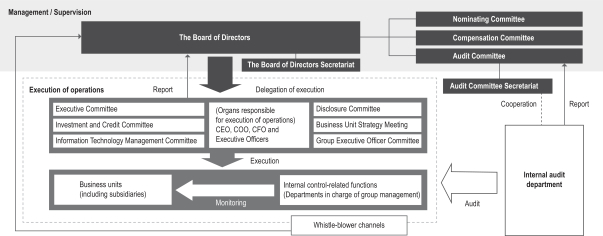Free signup for more
- Track your favorite companies
- Receive email alerts for new filings
- Personalized dashboard of news and more
- Access all data and search results
Content analysis
?| Positive | ||
| Negative | ||
| Uncertain | ||
| Constraining | ||
| Legalese | ||
| Litigious | ||
| Readability |
H.S. freshman Bad
|
|
New words:
Abuse, Accenture, affordable, AIFM, arisen, arrive, Asian, Australian, Berhad, borne, caution, Chemical, Chikatomo, Circular, clause, compelling, Comptroller, contrary, correlated, Council, debriefing, didno, dissipation, easily, eleven, embodying, encounter, encourage, ESCO, ESG, EU, faith, fallback, feature, felt, flag, GDP, grace, healthy, hike, Hitosubashi, Hodo, hoped, icant, imposition, incomewere, interview, Konica, landscape, legislation, Lument, massive, meaningful, Minolta, mismatch, modification, MSRB, multifamily, Negara, notwithstanding, OCE, Paulo, PE, persuading, pioneer, PT, ransomware, recordkeeping, revolving, rollforward, Rulemaking, safe, Sao, Schweiz, Signif, solidifying, Sourcebook, SOUTH, stage, statementsof, stop, storage, strongly, subsided, successor, supplementary, Task, TCFD, twelve, unconditionally, unemployment, unforeseen, urgency, vaccination, valuable, venture, virtue, visual, xxv
Removed:
abundant, add, Adjunct, advanced, aimed, AMF, anchored, announced, ASIC, assured, attractive, Benesse, bill, BIPRU, buyer, byThe, calibration, cancer, care, CFO, chaired, channel, Cleansing, cloud, commenced, comment, Companhia, consortium, continuum, controle, convertible, creditability, CSSF, cultivated, cut, CVM, defer, Delaware, deliberate, deploying, deregulation, du, dynamism, Eiko, elaborate, eliminating, entertainment, finalize, finalized, Financier, French, FSB, geothermal, gigawatt, grasping, greatly, grow, Hamamatsu, Harrison, healthcare, heart, Hideto, hitomaro, Honsha, inconsistent, indirect, ingenuity, inherited, integrate, intermediary, introducing, JREIT, Kamei, Katsunobu, Kazutaka, Kearney, Lancaster, launched, leverage, LIHTC, logistic, LPH, Ltda, Luxembourg, mail, margin, MAS, McKinsey, merged, MGCM, Miami, MIG, Mirai, month, nationwide, niche, Nishitani, OAC, Ohio, opportunistic, optimum, origin, passage, patriot, penalized, persuasive, plant, Pollard, precision, presenting, printing, promulgated, recommended, regime, Regulating, reinforce, relying, remitting, rendered, renter, restrict, revised, revisit, RHK, Road, RobecoSAM, Ryuji, Secteur, seeking, selecting, SFC, Shimoura, shipping, shrinking, solicitation, spanning, steadily, steady, stream, strength, stronger, structural, Surveillance, syndicator, systemically, tablet, theAustralian, theAuthorit, theCommission, theFinancial, theMonetary, thousand, threaten, today, tourism, track, Transformer, transforming, Tsujiyama, ultimately, unclear, Underpinned, usury, vehicle, wait, wastewater, Yakult, yano, Yasuda, Yodogawa, zone
Filing tables
Filing exhibits
- 20-F Annual report (foreign)
- 1.1 Articles of Incorporation
- 1.3 Share Handling Regulations
- 8.1 List of Subsidiaries and Affiliates
- 12.1 Certifications Required by Rule 13A-14 (A) or Rule 15D-14 (A)
- 13.1 Certifications Required by Rule 13A-14 (B) or Rule 15D-14 (B) and Section 1350
- 15.1 Consent of Independent Registered Public Accounting Firm
- Download Excel data file
- View Excel data file
IX similar filings
Filing view
External links

